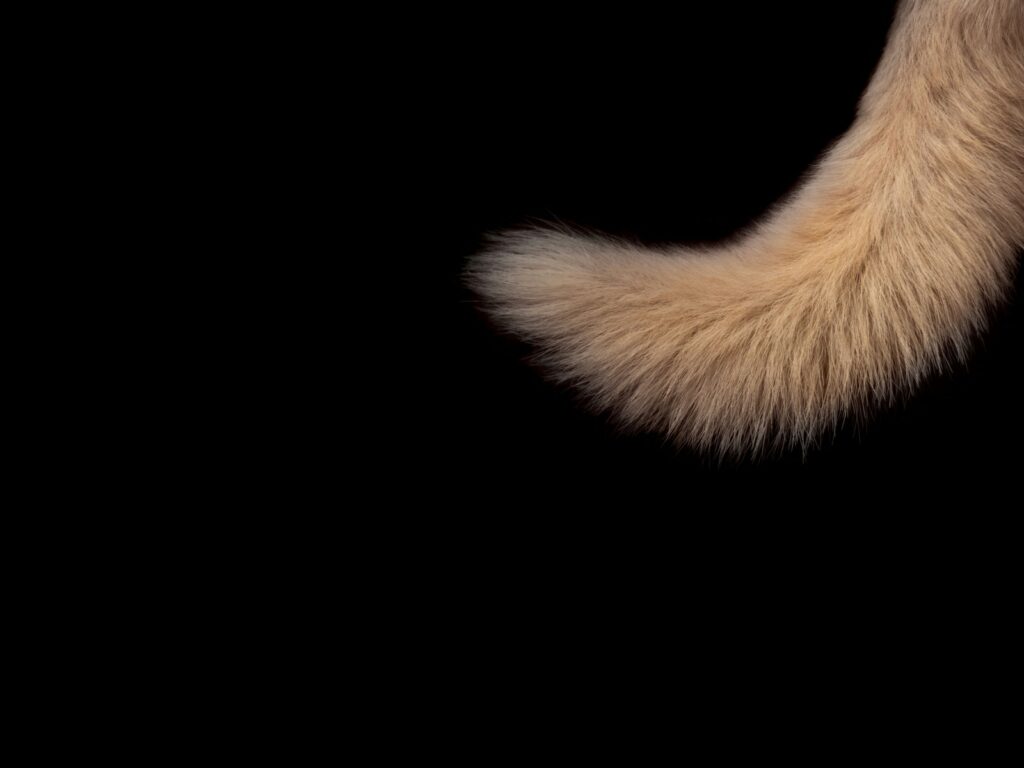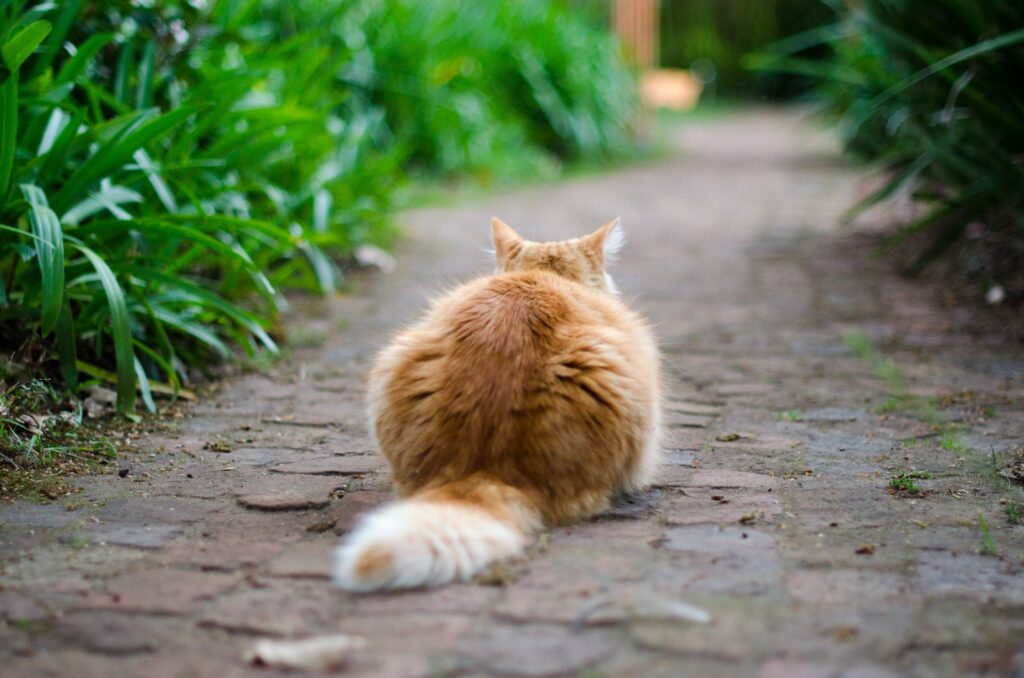A cat’s tail is an essential part of its body. As cute and fluffy as it is, its function is not only decorative. It plays a vital role in the balance and equilibrium of a feline. It is also used to express myriad emotions, so it helps us better understand the secret language of cats. But have you ever asked yourself, “can cats feel their tail?“
We can ask ourselves many questions about the tail of our little furry ones. And trust me, all of them are equally important, so let’s go directly to a brief but enriching tour of feline anatomy and clear once and for all the doubts you have about the fascinating tail of cats.
Can cats feel their tail?
We start with a fundamental question, and the answer is yes. Cats’ tails are pretty sensitive to touch because they are made up of hundreds of nerve endings, which is why most cats don’t like us touching their tails. Cats’ tails are the continuation of their spine, composed of vertebrae, ligaments, muscles, and sensory nerves. Not only can they feel it, but it is a part of their body that they must protect.

It’s not advisable to touch a cat’s tail because, in addition to the fact that they don’t like it and we expose ourselves to being bitten, it’s preferable to avoid it so as not to run the risk of hurting the tail and much less its spinal column.
The function of the cat’s tail
A cat’s tail has several vital functions. Among them, perhaps the most relevant is to help them maintain their balance; it’s their secret for those perfect landings. Have you ever seen how a cat walks on an ultra-thin surface and never falls? Their tail helps them keep their balance, like when we extend our arms when walking on a rope. Also, when they jump, the tail helps them orient themselves, hence the saying that cats always land upright because the tail tells them whether they are upside down.
Another unknown function of their tail is that it helps them to measure the environment. Since the tail has many nerve endings, they can feel if something is cold or hot, or they can even touch some surfaces with it to know if it is stable and decide whether or not to walk on it.
Most common cat tail injuries
Despite being one of the most sensitive parts of their body, it’s also one of the parts that get hit and stepped on the most. It is prevalent for a cat to injure its tail, either by accident or by mishandling when petting them, especially when it comes to children.
1. Tail fracture
The most common type of accident is the fracture of the tail vertebrae. It’s prevalent when we close a door or cabinet, and the tail gets stuck or when we step on it. For feral cats or those who are allowed to be outside, it’s also likely that their tail will be run over by a car or a bicycle.
Fortunately, it’s easy to notice a fracture as the tail will look a little limp, and it is advisable to visit the vet as soon as possible so your cat can begin treatment. In most cases, the tail recovers well, as when a person suffers a fracture of any bone, although in severe cases, it may require partial or total amputation.

2. Tail-pulling injury
This is very common in homes with children because sometimes they tend to pull the cat’s tail to prevent them from leaving, and what happens is that the tail becomes dislocated. That is, it separates from the base and the spine. This type of injury is complicated because it can have repercussions on the spine, even damaging the cat’s hind legs or sometimes making it challenging to perform natural movements such as bending over to urinate or defecating. In some cases, this injury even causes incontinence.
3. Dead tail
This is not a type of injury; instead, it is the consequence of an accident. When the cat’s tail suffers severe trauma or some damage is not treated in time and form, the cat’s tail can lose movement and sensitivity. That is why it is known as the dead tail. When this happens, the cat drags the tail, exposing it to more dangers, such as being stepped on or stuck.
Can cats control their tails? Do cats feel their tails?
Absolutely! This question is interesting because although the tail seems to have involuntary movements, most depend on the cat’s mood. That’s why it is said that the actions of the tail send us clear messages, for example, if it is happy or furious.
A cat’s tail is made up of 20 tiny bones called vertebrae, and these furry little guys can even control the movement of the tip of the tail. If you’re interested in knowing what each action means, let’s move on to the next question!
Meaning of cat’s tail movement
Finally, I’ll tell you what the most common movements mean. This way, you will know what your cat wants to say to you when it wags its beautiful, expressive tail.
- Tail wagging from side to side: careful, although in dogs, it means that they are happy; when a cat does this, it’s a clear sign that it’s angry and may attack.
- Upright tail pointing to the sky: this is the sign you were waiting for. It means that the cat is happy. In addition to being vertical, if the tip of the tail is slightly bent, your cat is pleased.
- Bristly tail wagging: Cats bristle their tails to look bigger and intimidate the enemy. If you see that your cat has a bristly tail, stay away because it means that he is furious and will attack. It is never a good idea to try to calm a cat. Just give it some space.
- Swaying tail: This movement indicates several things. If the cat is lying down and wagging his tail, he is happy and at ease. You will see him doing it on occasions when he is playing, which means he is having a great time. Other times you will see him looking at something while wagging his tail. This means he is concentrating, most likely focusing on a prey, natural, or toy.

Can cats feel their tail? The bottom line
Now you know a little more about the tail of cats, and although they don’t have as much control over it as we humans do, they can feel it and use it to send us messages. Pay attention to your cat’s movements; if you do, you can interpret what he wants to tell you. And finally, always remember that in case of any injury or unusual behavior on the part of your furry companion, go to the vet for advice.
Have you ever analyzed your cat’s tail movements? What do you think it means? We’d love to hear your thoughts!
